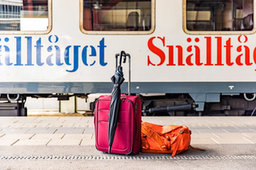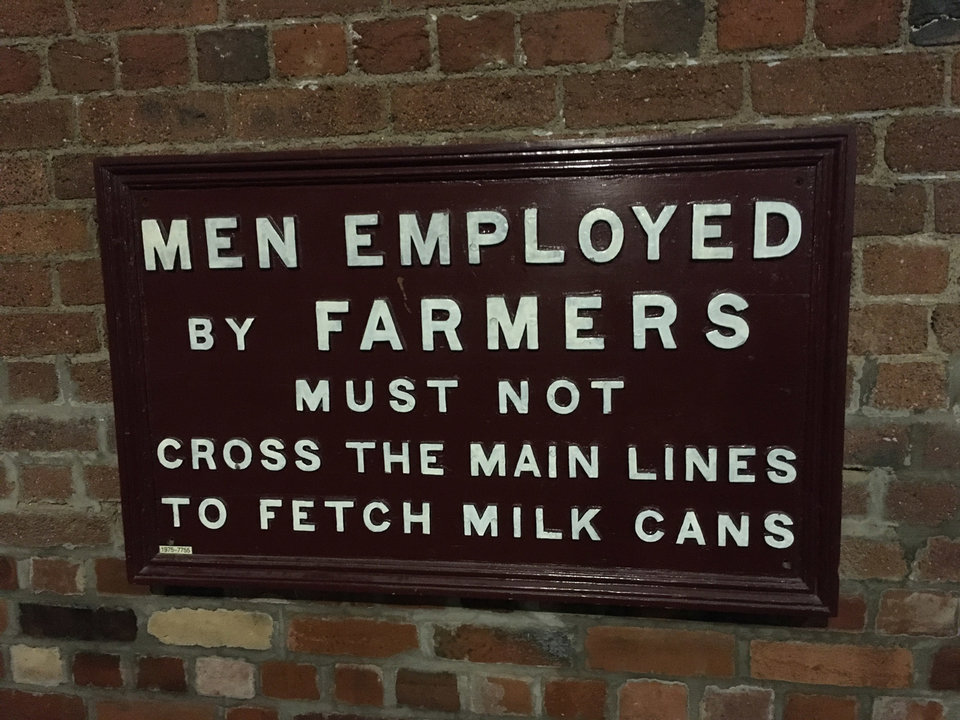Environment
How rail can offset a short-haul ban
Research by OBC Transeuropa suggests that one-third of the busiest short-haul flights in Europe can be replaced by trains with journey times under six hours, and has suggested a ban on short-haul flights. Jasleen Mann explores the plausibility of a ban.
W
hile the European Commission has called for collective travel under 500km to become carbon neutral, its ‘Sustainable and Smart Mobility Strategy‘ proposal does not establish any plans to reduce air travel and redirect passengers to trains. Greenpeace has demanded that the EU places a ban on short-haul flights where a train alternative under six hours is possible, but various improvements to train systems need to be made.
The research found 51 of the 150 busiest short-haul flights in the EU have train alternatives under six hours, 73 of the 250 busiest short-haul flights in Europe (EU, Norway, Switzerland, and the UK) have train alternatives under six hours, and 41 of the 150 busiest EU flights have direct night train alternatives.
Greenpeace estimates that implementing these changes in the EU will save 3.5 million tonnes of carbon dioxide equivalent (CO2e) each year, while the wider area of Europe could save 23.4 million tonnes of CO2e per year. The Madrid –Barcelona flight has been used as an example, due to it being the busiest in Spain. The route emits up to nine times more CO2e than taking the alternative 2.5-hour train journey.
Network Rail CEO Andrew Haines. Credit: Network Rail

Improving rail
Improvements need to be made to the quality of trains, frequency of trains, ticket costs, and accessibility.
Herwig Schuster, campaign development and project lead at Greenpeace, says: “Infrastructure investments in rolling stock are important. There has to be a better ticketing system in Europe, it is very complicated to book tickets for cross-border train travel, as you have to search on different websites. There should be better cooperation between train operators.”
He acknowledged other benefits of travelling by rail as opposed to air such as waiting times, luggage restrictions and good working conditions which include power sockets and WiFi.
“The French Government has already banned some flights that are less than two hours. I think more countries will do this. In 10-15 years I believe that short-haul flights in Europe will be a thing of the past,” adds Schuster.
Climate campaigners such as Communities Against Gatwick Noise Emissions (CAGNE) have suggested that flight tickets should reflect the environmental ramifications of the flight, but they are currently cheaper than train alternatives.
Sally Pavey, chair of CAGNE, says: “The more the government allows airport expansion, we will never address this imbalance. We should be investing in rail and stopping airport expansion until the industry can be green which will take large investments and a major source with vast quantities.”
Sustainable fuel search
The aviation industry has explained that a ban on domestic flights will not always be possible. In the UK, domestic routes can be considered essential, such as routes from Northern Ireland to the British mainland, or from routes in the Scottish Highlands and Islands to other parts of the UK.
Short-haul and domestic flights also efficiently cross water – with more than 60% of the UK’s domestic air services doing so. This connects Northern Ireland, the Channel Islands, the Isle of Mann, and the Scottish Isles to the mainland and to each other.
Tim Alderslade, chief executive of Airlines UK, explains: “Flying isn’t the problem – carbon emissions are – and we believe that the solution is not to curtail to huge economic and social benefits derived from flying but rather to deliver in the solutions that promise to make zero-emission flight a reality.”
Sustainable aviation fuels are expected to play a significant role in this while residual emissions could be offset and removed via direct air capture technologies.
Alderslade adds: “The introduction of sustainable aviation fuels this decade could account for at least 30% of UK aviation fuel demand by 2050, the introduction of new technology and propulsion systems, with Airbus aiming to be able to offer a medium-range, commercial hydrogen-powered aircraft by the middle 2030s, and airspace modernisation.”
The aviation industry has been under government pressure to develop greener practices in the industry.
In terms of longer-haul flights, the development of sustainable aviation fuels from bio and synthetic feedstocks has accelerated, as a result of new production facilities planned across the UK. The challenges will be designing aircraft compatible high-pressure tanks for gaseous hydrogen or cryogenic tanks for liquid hydrogen.
In addition, supporting ground infrastructure would need to be in place. The Aerospace Technology Institute funds the Flyzero project, which covers these as areas of study as well as projects which have been funded under the UK Government’s Future Flight scheme.
The aviation industry has been under government pressure to develop greener practices in the industry. However, concerns remain about how soon these plans can be achieved.
Pavey says: “The aviation industry is waking up due to government pressure about making the industry greener. We don’t have the quantities of sustainable aviation fuel and other industries are looking for the same source.
“It is one thing to fly because there is no way of getting to Australia and it is another to be on leisure flights.”
Hidden figures
It is important to distinguish between domestic and international air transport. International air transport emissions have continued to increase significantly, but domestic air transport emissions in the UK peaked in 2005 and have been declining steadily.
Domestic UK air emissions are lower in aggregate when compared with rail, which is the alternative mode of transport that is typically encouraged.
Andy Smith, head of sustainability strategy at Loganair, says: “Diesel rail emissions alone are greater than all UK domestic flights, yet this mode is considered to be universally more sustainable as the statistics produced by BEIS and used by the Department for Transport end up disguising the real climate impact of non-electrified rail travel.
Non-electrified railways are the only option for the majority of the country outside of the South East and trunk routes, by blending the low emissions per passenger of electrified rail with the very high emissions per passenger of diesel.”
Rather than competing directly, we would like to see rail, air and road links better integrated to permit travellers to make seamless interchanges and select the most efficient choice for their journey.
It can be argued that the BEIS emissions factors suggest that the impact of domestic and all short-haul air travel is 90% greater than its direct emissions, based on an assessment of the indirect effects of high-altitude emissions, which include high altitude nitrogen oxide and contrails.
This doubling of the impact should not apply to short-haul flights, as the lower cruise altitudes used by turboprops mean conditions that cause contrails are rarely encountered. In addition, nitrogen oxide impacts are far lower for short-haul flights than long haul flights.
Smith adds: “This is important because the addition of the 90% factor – despite the low scientific confidence surrounding indirect effects) leads BEIS to suggest that flying is more harmful to the climate than driving a car, despite the fact that air travel, by government’s own calculations, emits less direct CO₂ per passenger-km than the equivalent car journey.”
Acknowledging the inappropriateness of its application and the low scientific confidence surrounding indirect effects – leads BEIS to suggest that flying is more harmful to the climate than driving a car, despite the fact that air travel, by government’s own calculations, emits less direct CO₂ per passenger-km than the equivalent car journey.”
Loganair recommends a level playing field between these modes of transport along with a wholistic approach to taxation and policy.
Smith says: “Rather than competing directly, we would like to see rail, air and road links better integrated to permit travellers to make seamless interchanges and select the most efficient choice for their journey.”
The benefits of rail
One-quarter of the EU’s GHG emissions can be attributed to transport. Roads are responsible for 72% and the aviation industry is responsible for 12%, a significant difference when compared with the 0.5% in the rail industry.
The International Air Transport Association expects that there will be 8.2 billion air travellers in 2037, which will lead to a significant increase in greenhouse gas emissions. In the rail industry, while the International Energy Association expects passenger and freight activity on railways will more than double by 2050 – further progress has been made with the electrification of rail.
The vast majority of the population use rail due to the number of stations available. Rail stations are convenient in that they connect people through city centres whereas airports tend to be located on the outskirts of cities. Another convenience afforded to train passengers is the frequency of trains available when compared to flights.
Train journeys, when compared with flights, offer more comfort for passengers. This applies whether the passenger chooses to work on their journey or not. Passengers have more space and opportunities to move around on their journey as opposed to remaining seated on aeroplanes.
While train service on the Brussels-Vienna, Stockholm-Berlin, and Amsterdam-Munich routes have improved, there are many more improvements that need to be made in order to consolidate rail as the most accessible and greenest mode of transport.

Trespassing on the railway is an age-old problem. Credit: Peter Nilson
Main animation: Noemi Balint